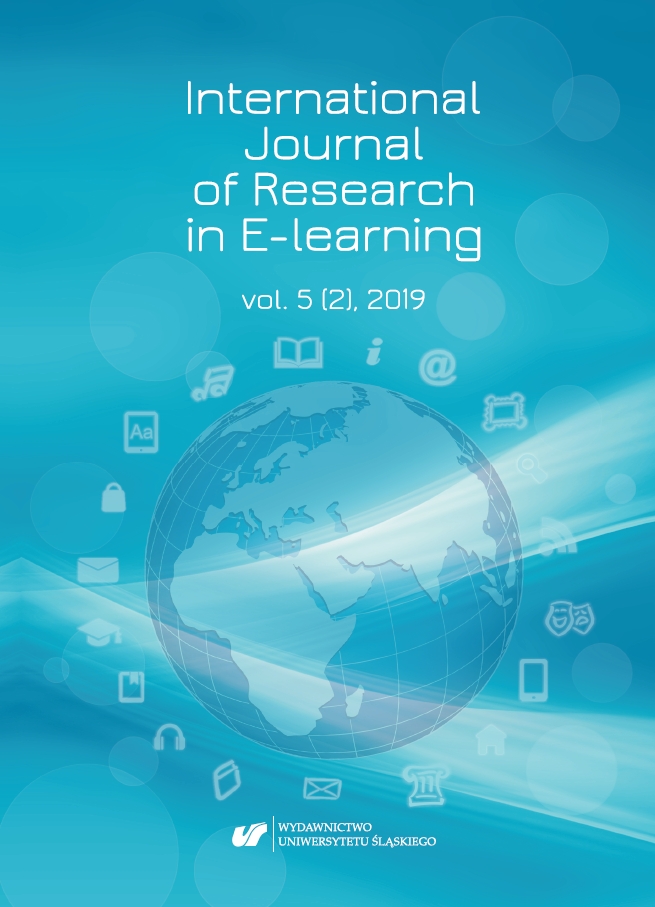Coyle, D., Hood, P., & Marsh, D. (2010). C.L.I.L. Content and Language Integrated Learning. Cambridge: CUP.
Google Scholar
Debyser, F. (1970). La linguistique contrastive et les interférences. Langue française, 8 (1070), 31–61.
Google Scholar
Gabryś-Barker, D. (2005). Aspects of multilingual storage, processing and retrieval. Katowice: Wydawnictwo Uniwersytetu Śląskiego.
Google Scholar
Kubiak, B. (2002). Pojęcie języka specjalistycznego. Języki Obce w Szkole, 5, 6–11.
Google Scholar
Fiorella, L. & Mayer, R. E. (2013). The relative benefits of learning by teaching and teaching expectancy. Contemporary Educational Psychology, 38(4), 281–288.
Google Scholar
Grzega, J. (2006). Developing More than Just Linguistic Competence – The Model LdL for Teaching Foreign Languages with a Note on Basic Global English. Humanising Langugage Teaching, 8(5).
Google Scholar
Kucharczyk, R. (2018). Nauczanie języków obcych a dydaktyka wielojęzyczności (na przykładzie francuskiego jako drugiego języka obcego). Lublin, Werset.
Google Scholar
Martin, J-P. (1989). Quand les élèves font la classe. Le Français dans le monde, 224, 51–55.
Google Scholar
Martin, J-P. (2004). Lernen durch Lehren: quand les apprenants font la classe. Les Cahiers de l’APLIUT, 33(1), 45–56.
Google Scholar
Moodle Platform of the University of Silesia used for online language courses supervised by the author, created by MA students. Retrieved from: http://el.us.edu.pl/wf/, http://el.us.edu.pl/demo/.
Google Scholar
Półtorak, E. (2015). Impact des nouvelles technologies sur les pratiques évaluatives en langues vivantes. Katowice: Wydawnictwo Uniwersytetu Śląskiego.
Google Scholar
Rézau, J. (2008). Un cas particulier du scénario dans l’apprentissage des langues: le labyrinthe (action maze). Alsic, 11, 2. Retrieved from: http://journals.openedition.org/alsic/137.
Google Scholar
Sawicka, A. (2009). Krótka charakterystyka języków specjalistycznych. In: Komunikacja Specjalistyczna TOM II Specyfika języków specjalistycznych (pp. 188–197). Warszawa: Uniwersytet Warszawski.
Google Scholar
Trace, J., Hudson, T., & Brown, J. D. (2015). An overview of language for specific purposes. In: J. Trace, T. Hudson, & J. D. Brown, Developing Courses in Languages for Specific Purposes (pp. 1–23). (NetWork #69) [PDF document]. Honolulu: University of Hawai‘i. Retrieved from http://nflrc.lll.hawaii.edu/media/docs/NW69-01.pdf.
Google Scholar
Widła, H. (2007). L’acquisition du français – langue troisième. Problèmes méthodologiques et implications pratiques. Katowice: Wydawnictwo Uniwersytetu Śląskiego.
Google Scholar
Widła, H. (2009). Ćwiczenia z języka francuskiego [eBook]. Dodatek do książki: L’acquisition du français – langue troisième. Problèmes méthodologiques et implications pratiques. Katowice: Wydawnictwo Uniwersytetu Śląskiego.
Google Scholar
Widła, H. (2011). Skuteczność nauczania drugiego języka obcego – próba zastosowania wyników badań w praktyce. Lingwistyka Stosowana, 4, 53–67.
Google Scholar
Widła, H. (2012). L’acquisition du français – langue troisième par le biais d’un environnement d’apprentissage en ligne. In S. Berbinski, D. Dobre, A. Velicu (Eds.), Langage(s) et traduction (pp. 123–134). Editura Universitatii din Bucuresti.
Google Scholar
Widła, H., Półtorak, E., & Krajka, J. (2014). E-learning in cultural studies instruction – designing, implementing and evaluating a study programme. In: E. Smyrnova-Trybulska (Ed.), E-learning and intercultural competences development in different countries (pp. 239–252). Katowice-Cieszyn, Studio NOA.
Google Scholar
Widła, H. (2016). Znajomość języków a znajomość kultur. Języki Obce w Szkole, 1, 86–91.
Google Scholar
Widła, H. (2018). Le français: troisième langue parlée, troisième langue apprise. In: M. Piotrowska-Skrzypek, M. Deckert, N. Maslowski (Eds), Formation et compétences plurilingues. Lublin, Werset.
Google Scholar


 https://doi.org/10.31261/IJREL.2019.5.2.03
https://doi.org/10.31261/IJREL.2019.5.2.03
